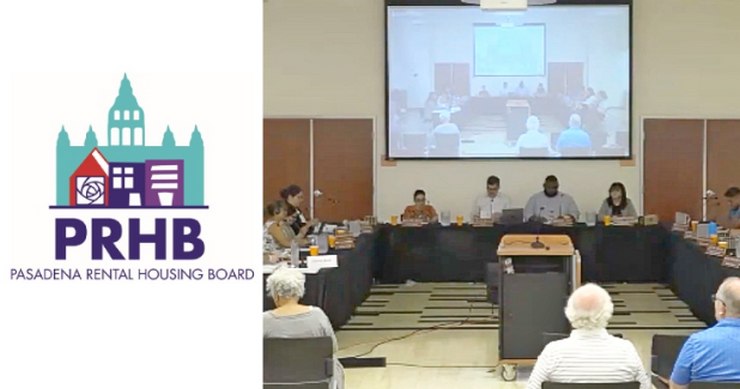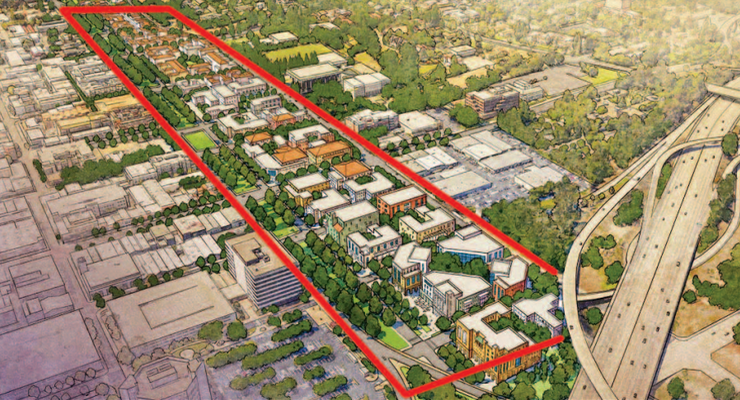Sept 14, 2020
Dear Honorable Mayor and City Council,
We can appreciate some of the challenges of trying to figure out how to meet the goal of 9,409 Housing units in the next eight years. It feels not only daunting and even impossible but in this letter we have outlined how that number of units can be produced and fit well into our community.
Today the Council is also considering authorization for a consultant to assist in preparing the 2021-29 Housing Element. Rather than expending time and energy in what is likely a futile effort to alter Pasadena’s RHNA allocation, MHCH supports putting emphasis on a broad collaborative effort to shape a realistic Housing Element that both can meet State legal requirements and has inclusive community input and support. This will require more than pro forma community engagement to ensure that communities of color and lower-income residents are fully represented in the process. The current schedule calls for a draft by May 2021, which with upcoming holidays and the constraints of the COVID pandemic means the City would be better served by putting all its energy into a productive effort rather than a simply symbolic one.
During the Public Engagement portion of one of the last Housing Elements, there was time for only one public meeting and only four people showed up. Our organization asked to have more meetings in various churches, which the city graciously did. We are would like to offer our services to continue a collaborative spirit as we seek to imagine together how we can meet the RHNA goals. Here’s and idea of how units could be produced:
1. During this past 8-year RHNA cycle we needed to build only 561 market rate units, but Pasadena surpass that by 2,100 units. So, it looks like we should not have too much trouble meeting the above moderate allocation.
2. The challenge is with the lower income units which equals 5,960 additional affordable units in the next eight years. If we divide that by 7 for each councilman district that come to 851 per district. Then if we divide 851 by 8 So that we can determine how many units per year, that comes to 106 per year for each councilman district.
3. If we break down 106 units into the following three categories it starts looking possible:
• Zoning for 35 inclusionary units per district per year
• Zoning for 35 affordable ADU per district per year
• Zoning for only 35 affordable housing units on Church Land per district per year.
The 5,960 additional affordable housing units allocated in this next 8-year cycle actually still reflects only part of the need, so we should not be questioning this number if we love our city and all those struggling to make ends meet—especially now. Approximately half the Pasadena is spending over 50% of their income on housing. We still have 527 homeless neighbors we need to make sure get housed, and that count was done before COVID fully kicked in. We are expecting between a 20-45% increase in homelessness due to COVID and fires. We have jam-packed freeways, most driving a distance to find housing they can afford, in fact many of Pasadena staff members live a distance. If we supplied housing for those who live, work and worship in Pasadena, we would lower traffic and create a more thriving healthy city. That is the premise behind Housing Element law. A healthy city is made up of all income levels.
We love Pasadena’s housing vision:
All Pasadena residents have an equal right to live in decent, safe and affordable housing in a suitable living environment for the long-term well-being and stability of themselves, their families, their neighborhoods, and their community. The housing vision for Pasadena is to maintain a socially and economically diverse community of homeowners and renters who are afforded this right.
Each time I read this, it reminds me of the greatest command in the Bible, “You must love the Lord your God with all your heart and with all your soul and with all your strength and with all your mind; and your neighbor as yourself” (Luke 10:27). If we want to live in a nice home in a safe neighborhood, we should want that everyone. I believe it is possible to meet the RHNA if we all show our love for our great city by figuring out how to meet this urgent need and not waist our precious taxes dollars on fighting this, when it’s very likely an unwinnable battle. But we must love all members of our community.
Nine in ten Black people say African-Americans have not achieved equality in this country. Four in ten are skeptical that they ever will. Yet thirty-eight percent of white Americans think “our country has made the changes needed to give blacks equal rights with whites.” Facts suggest we have a long way to go to achieve economic equality between white and black Americans. Thankfully, the Housing Element now addresses racial disparity with Affirmatively Furthering Fair Housing (AFFH). I will name only three of the many blatant exclusionary practices from Pasadena’s history with long shadows still manifest in staggering racial disparities we can and must address:
With Urban Renewal, the building of Parson’s replaced a thriving Black and Brown neighborhood, some say up to 20,000 people. Scott UMC was moved to Orange Grove Blvd, but Friendship Baptist at 80 Dayton is a reminder of once was.
The 210 built in the early 70’s created an easy exit to build in the suburbs, for those who could afford cars and property in adjacent cities. But Lincoln Avenue’s thriving Black Business District was destroyed and has never recovered. Thousands of people were displaced in the path of the freeway. South Pasadena, a wealthy community, avoided this nightmare of the freeway destroying their community after years of organizing, which Pasadena supported.
AB Smith Sold Restrictive Covenants for $5 and at one point 65% of the Pasadena had racially restrictive covenants on their homes, pushing the home value up and lowering home values in areas where people of color lived. Smith even bought property to prevent “encroachment” In 1939 when he heard rumors that some Black people were “infiltrating” into areas outside of their boundaries. The Pasadena Improvement Foundation was formed to assure that they were kept in place.
When AFFH is applied to Pasadena the city must ask:
What is the socio-economic and racial breakdown in each district?
How many people commute to Pasadena each day—and at what distance?
Hoe much affordable housing is there in each district?
Sincerely,
Jill Suzanne Shook, ED, Making Housing and Community Happen
Anthony Manousos, Co-Founder
Sonja Berndt, Core Group member
Bert Newton, Liaison Coordinator
Ann Marie Molina, ADU Chair
Got something to say, email Managing Editor André Coleman, at andrec@pasadenanowmagazine.














 0 comments
0 comments


